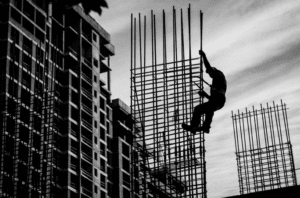Construction quality non-conformance is a common issue that results when the materials, labor, and design of construction projects do not meet the required standards. It can disrupt project schedules and budgets and even result in safety hazards. As such, construction professionals must understand how to manage any non-conformances that arise effectively. The following guide outlines the steps necessary for managing construction quality non-conformance.
Identification of Non-Conformance
The first step in managing construction quality non-conformance is identifying and documenting it. This can be achieved by conducting regular inspections and audits throughout construction. Any deviation from the project specifications or standards must be noted and recorded.
Although nonconformance management software may streamline the process, construction professionals should also conduct physical inspections and review reports from subcontractors to identify any quality issues.
Evaluation of Non-Conformance

Once the non-conformance is identified and documented, the next step is to evaluate its impact. This involves assessing the severity of the non-conformance and its potential consequences. The evaluation should consider factors such as the risk to health and safety, the impact on the project schedule and budget, and the possible effect on the quality of the final product.
Determination of Corrective Actions
Corrective actions must be determined based on the evaluation to address the non-conformance. The corrective actions should be appropriate for the severity of the non-conformance and must address the root cause of the issue. Corrective actions can include repairing or replacing the nonconforming item, modifying the construction process, or revising the project specifications or standards.
Implementation of Corrective Actions
The corrective actions must be implemented promptly to prevent the non-conformance from escalating. The implementation of corrective actions should be supervised by a competent authority to ensure that the actions are carried out correctly and effectively. The implementation process should also be documented for future reference.
Verification of Corrective Actions
 After implementing corrective actions, the next step is to verify that the non-conformance has been resolved. Verification can be achieved by conducting follow-up inspections and audits to confirm that the corrective actions have been implemented correctly and effectively.
After implementing corrective actions, the next step is to verify that the non-conformance has been resolved. Verification can be achieved by conducting follow-up inspections and audits to confirm that the corrective actions have been implemented correctly and effectively.
If the verification process confirms that the non-conformance has been resolved, it can be closed. Further corrective actions must be taken if the verification process reveals that the non-conformance is still present.
Documentation and Record-Keeping
Documentation and record-keeping are essential steps in managing construction quality non-conformance. All non-conformance incidents must be documented and recorded, including their identification, evaluation, corrective actions, and verification. This documentation will be valuable in preventing similar non-conformance in the future and will provide evidence of compliance with quality management standards.
Managing construction quality non-conformance requires a systematic and proactive approach. The steps outlined in this post are essential to effective non-conformance management. By following these steps, construction teams can prevent non-conformance from escalating, ensure compliance with quality management standards, and ultimately deliver high-quality construction projects.


